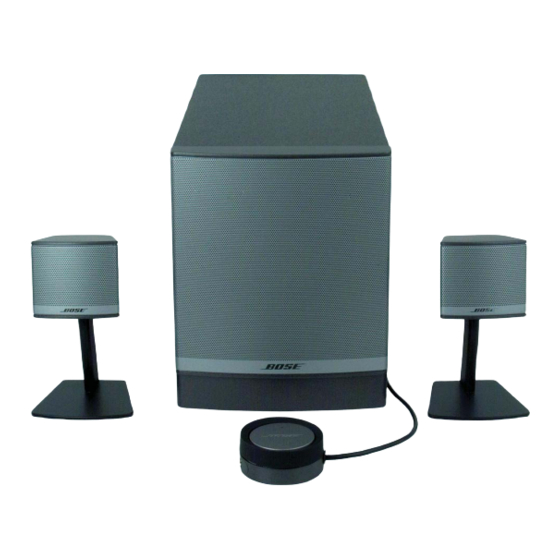Bose Companion 3 Series II Panduan Servis - Halaman 28
Jelajahi secara online atau unduh pdf Panduan Servis untuk Pembicara Bose Companion 3 Series II. Bose Companion 3 Series II 36 halaman. Multimedia speaker system
Juga untuk Bose Companion 3 Series II: Panduan Pemilik (40 halaman), Panduan Pemilik (40 halaman), Panduan Pemilik (22 halaman), Panduan Pemilik (10 halaman), Panduan Pemilik (20 halaman), Panduan Pemilik (26 halaman), Panduan Pengaturan Cepat (2 halaman), Panduan Pengaturan Cepat (2 halaman), Petunjuk Perakitan Rinci (2 halaman), Panduan Instalasi (20 halaman), Spesifikasi (6 halaman), Brosur & Spesifikasi (4 halaman), Panduan Pemilik (19 halaman), Panduan Servis (16 halaman)

- 1. Table of Contents
- 2. Safety Information
- 3. Electrostatic Discharge Sensitive (ESDS) Device Handling
- 4. Specifications
- 5. Part List Notes
- 6. Bass Module Assembly Parts List
- 7. Amplifier Module Assembly Parts List
- 8. Packing Parts List
- 9. Electrical Parts List
- 10. Main PCB Assembly Parts List
- 11. Power Supply PCB Assembly Parts List
- 12. Disassembly Procedures
- 13. Test Procedures
- 14. Theory of Operation
- 15. Revision History
